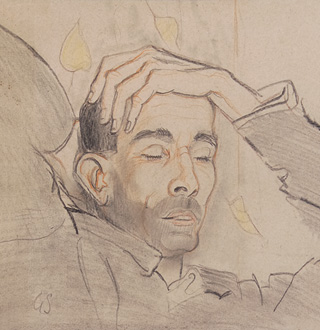Sandri's style comes from his teachers, from Mentessi to Tallone. He is capable of giving flavour, freedom and touch of the late nineteenth century to his painting. He does this giving us a most modern vision of people, images and expression. The artist had a very dramatic life, and his story is a tormented one. He was admitted several times to a psychiatric hospital. What strikes you very much is this recognition in others and in the attention towards others of suffering. His exceptional capacity to paint portraits is really very unique. In this capacity he found, against his will, the possibility of expressing himself in such a profound and original way that allows us today to underline its importance.
